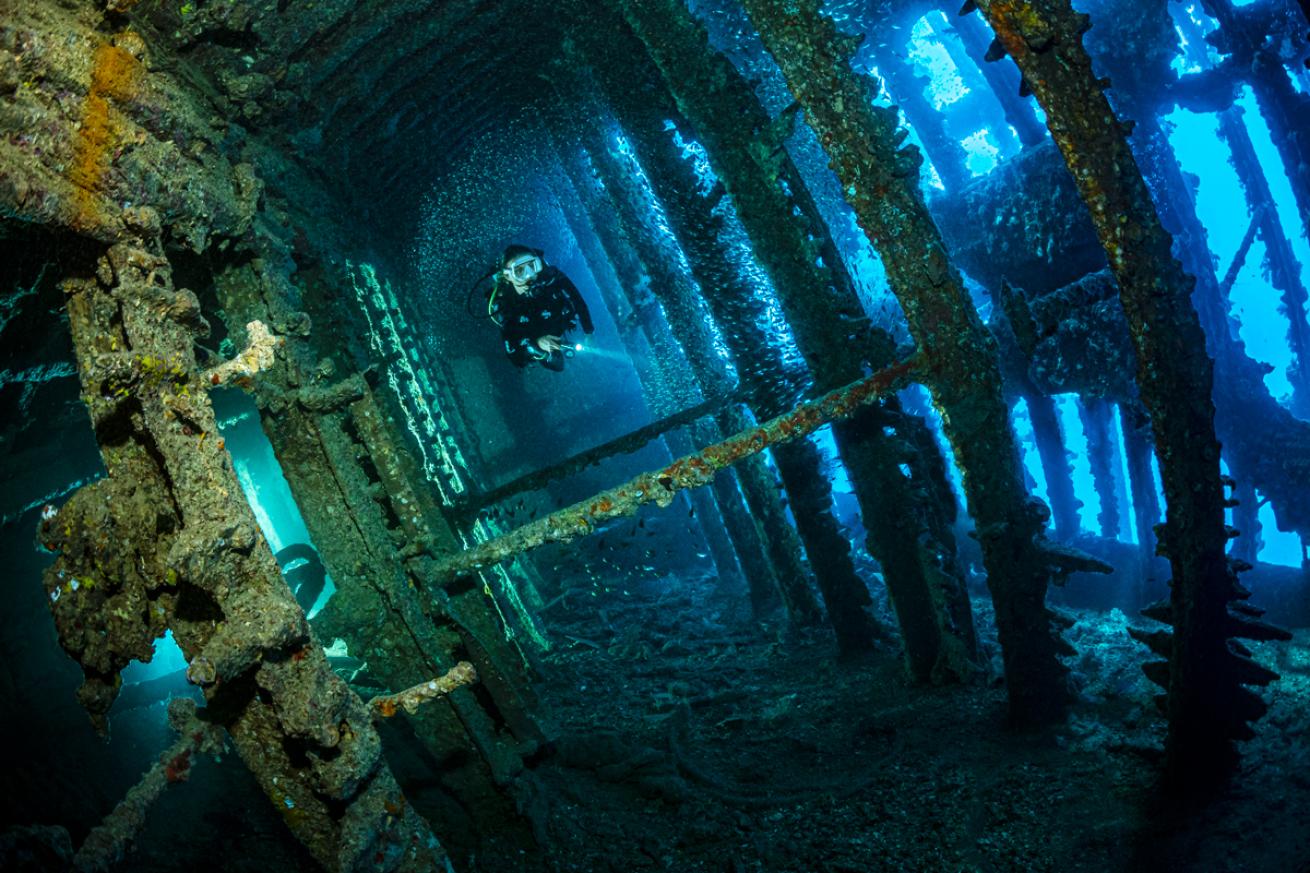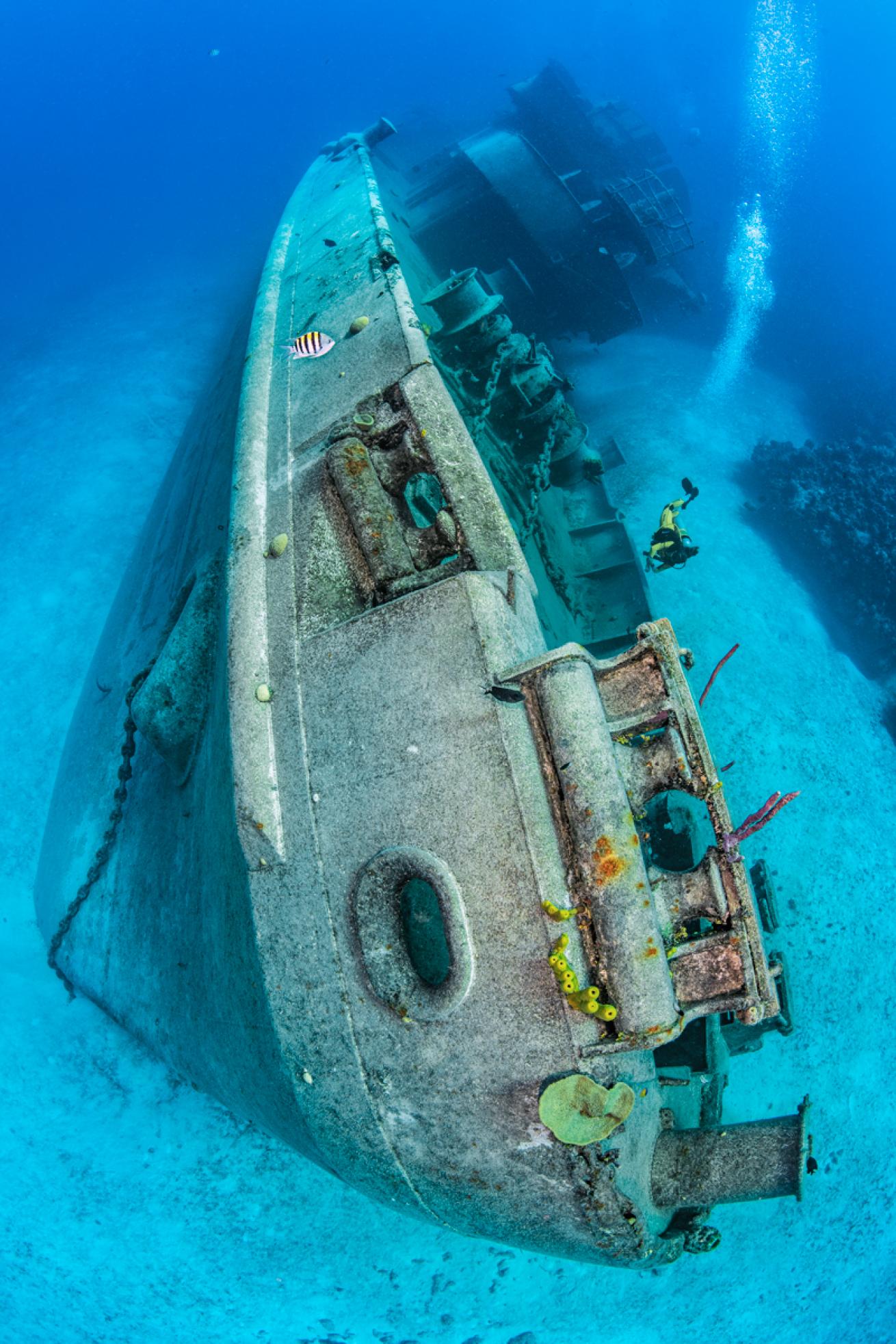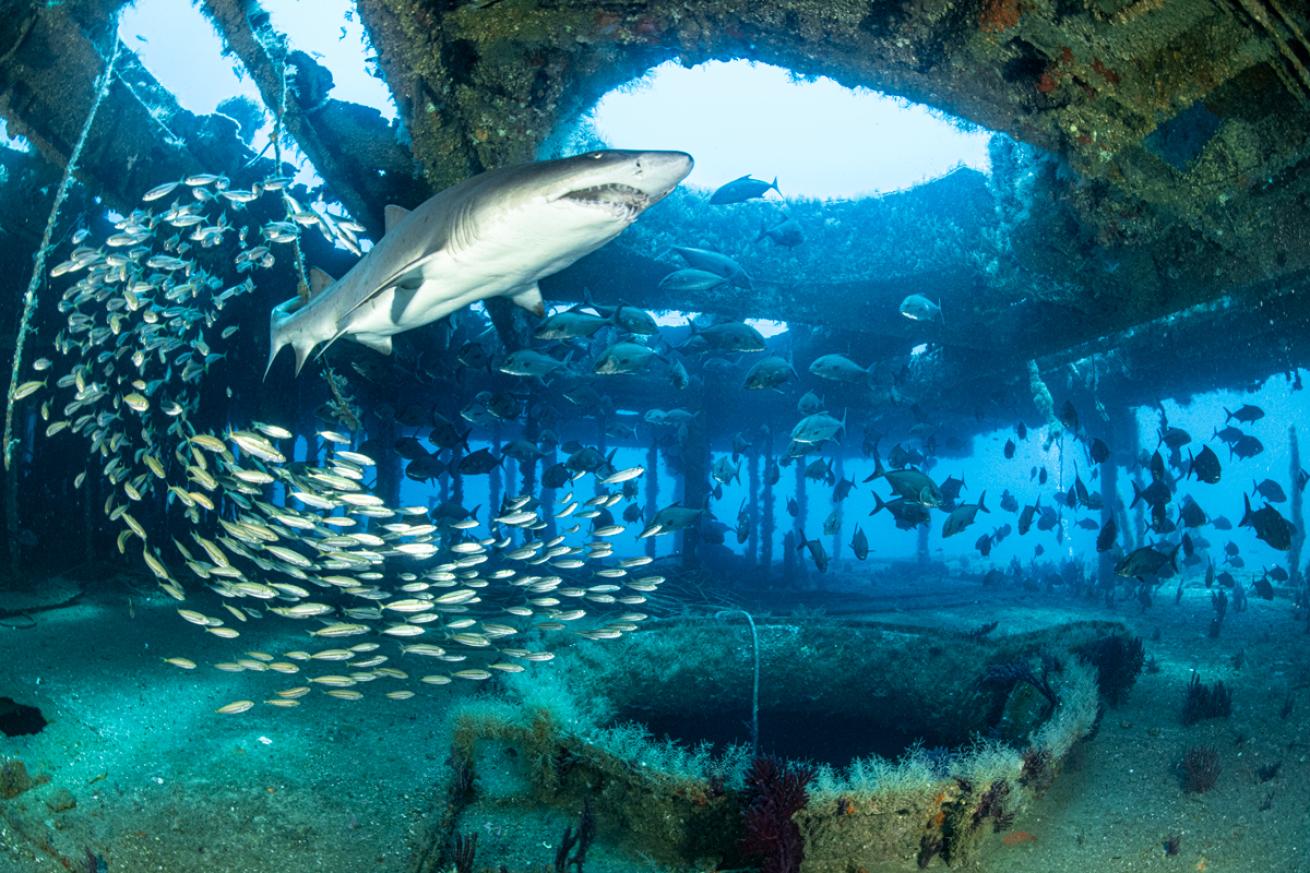The Best Destinations for Wreck Diving in 2022

Tobias FriedrichA diver explores the encrusted and enchanting bow of the Carnatic, in the Red Sea.
Caribbean and Atlantic
- Cayman Islands
- Bahamas
- Bay Islands
- Bonaire
- Mexico
- British Virgin Islands
- Aruba
- U.S. Virgin Islands
- St. Lucia 10. Curaçao
Pacific and Indian
- Red Sea
- Hawaii
- Palau
- Australia
- Fiji
- Philippines
- Indonesia
- Truk Lagoon
- Japan
- Thailand
U.S. and Canada
- North Carolina
- Great Lakes
- Ontario
- British Columbia
- New York/ New Jersey
- Florida Keys
- Florida
What Is Readers Choice? We’ve averaged reader survey results from 2020, 2021 and 2022 to bring you the Best of Readers Choice awards. Here we feature some of the top-rated destinations in the world, along with the winning resorts, operators and liveaboards serving those areas, listed in alphabetical order. For more: /readerschoice
1st Place Winner: Pacific and Indian
1. Red Sea
The Red Sea arguably holds one of the largest collections of divable wrecks, sunk by war, weather and human error. The World War II wreck of the SS Thistlegorm anchors the lot, largest in size and reputation, but it’s not short of company. The northern half of the Red Sea holds a greater volume of metal than the south, much of which is visited by Red Sea Aggressor II, committed solely to traveling this portion of the body of water.
A reef collision in 1869 saw the sinking of the Carnatic, a 295-foot British freighter. The ship has much in common with the RMS Rhone in the British Virgin Islands, another sailsteamer. Both have a similar structure and still contain the brass portals, steam stacks and engine parts; however, the Carnatic is more intact.
“For me, it’s all about the thought of, How cool would it have been to be sailing on a steam-powered sailboat?” says Wayne Brown, owner of Aggressor Adventures, of this unique dive experience.
2. St. Lucia
The Caribbean Island of St. Lucia is better known for its natural reefs, but is growing a collection of artificial reefs to match—which serves in greatly diversifying the variety of marine species found off the coast.
The 286-foot Vicky B cargo ship, a confiscated former drug-running vessel, was sunk in 2018 in Anse Cochon Bay. It’s now home to green turtles, queen angelfish and rock beauties, with colonies of tilefish and yellowhead jawfish claiming the surrounding sands.
“It is quickly developing into an exciting wreck,” says Callistus Jackson, a dive instructor with more than 20 years of experience with Anse Chastanet resort, located 4 miles south of the wreck.
One of the more established wrecks on island is the 160-foot Lesleen M, found at 60 feet deep.
At both ship sites, frogfish are common. Occasionally, an octopus can be spotted hunting, and on almost every dive, damselfish guarding patches of purple eggs are a highlight. Arguably the best encounter on the wrecks requires careful dive guide planning. Drop in at high noon when the currents are running just right, and hover among bluehead wrasse spawning, darting and weaving together up in the water column.
“Our guests were absolutely thrilled to see that,” says Carmen Toanchina, instructor at Anse Chastanet.
Readers Picks
Resorts:
- Anse Chastanet, St. Lucia
- Sandals Grande St. Lucian
- Gros-Islet, St. Lucia
3. Great Lakes
In a dive destination notorious for mercurial weather, it’s only natural to seek a sure thing.
Grant Island in Lake Superior, just off the coast of the city of Munising on Michigan’s Upper Peninsula, is that find. “It’s the only place where we have never been completely blown out,” says Rich Synowiec, owner of Divers Incorporated scuba center in Ann Arbor.
Target this wreck hotspot, and the lineup includes the 150-foot wooden schooner Bermuda, the 71-foot Steven M. Selvick, and the 260-foot Smith Moore—Synowiec’s favorite.
Still intact, the Smith Moore displays its rudderpost, capstan and a collection of artifacts as well as three sailing masts. “It was a steamship, built before they knew how to build steamships, so it has sails also,” Synowiec says. “The nice thing about it is that if you’re going to do a wreck that’s a little deeper and a little colder, you get a lot of advanced-dive feeling without it being an absolutely advanced dive.”
1st Place Winner: Caribbean and Atlantic
4. Cayman Islands

Alex MustardThe wreck of the USS Kittiwake, located just off Grand Cayman.
The biggest name in Cayman Islands wreck diving is undoubtedly the USS Kittiwake—five decks of Chanticleer-class submarine rescue ship that was once responsible for safely taking sailors trapped under the water to the surface.
The artificial reef, sunk in 2011, still carries the captain’s wheel, a head with an intact mirror, the prop and two hyperbaric chambers. “To scuba dive inside a decompression chamber is a unique experience,” says Tyler Hart, IDC staff instructor with Sunset Divers, the in-house scuba outfit of Sunset House Resort.
Already a hit, the ship grew even more intriguing after 2017. “Not all divers will agree, but most instructors find the wreck more interesting now that it sits at 45 degrees on its port side,” says Hart of the aftermath of Hurricane Nate rolling through.
The angle can be disorienting, but also lends it more of a natural wreck sensation. Better still, it shifted the ship’s location ever so slightly. “It’s leaning against the Cayman Trench wall, so now you can be on the ship and see over the wall,” says Hart.
It’s an experience that keeps changing with time, making it far from a one- and-done experience. “We have people that come back every year and the first thing they want to dive is the Kittiwake,” says Hart.
Readers Picks
Resorts:
- Cayman Brac Beach Resort, Cayman Islands
- Cobalt Coast Dive Resort, Grand Cayman, Cayman Islands
- Compass Point, Grand Cayman, Cayman Islands
- Little Cayman Beach Resort, Cayman Islands
- Southern Cross Club, Little Cayman, Cayman Islands
Operators:
- Brac Scuba Shack Divers, Cayman Brac, Cayman Islands
- Ocean Frontiers, Grand Cayman, Cayman Islands;
- Red Sail Sports, Grand Cayman, Cayman Islands
- Reef Divers, Cayman Brac, Cayman Islands
- Reef Divers, Grand Cayman, Cayman Islands Reef Divers, Little Cayman, Cayman Islands
- Sunset Divers, Grand Cayman, Cayman Islands
Liveaboards:
- Cayman Aggressor V, Cayman Islands
5. Hawaii
Oahu is as much about experiencing wrecks of ships that served in wartime as it is about seeing big animals that dominate the Pacific Ocean.
Off Oahu’s southern coast lies the popular wreck of a landing craft utility boat that was once responsible for troop beach landings. Now upside-down in 65 feet of water, it provides habitat for fish higher up in the food chain— primarily schools of trevally. “The trevally are so big they look like dinosaurs,” says Jackson Rosenberg, manager with Dive Oahu, which operates three locations on island.
The menu of Oahu wreck dives also includes the 109-foot Nashua Navy tug, found at 60 feet deep. This too is habitat for the bigger stuff, including Hawaiian monk seals. “It’s on a ledge, so there’s always that chance of larger animals coming across the deck,” says Rosenberg.
Manta rays and eagle rays are often in the mix, as well as sharks. “I see a bunch of blacktip reef sharks and sand- bar sharks on every visit,” he says.
Readers Picks
Operators:
- Big Island Divers, Hawaii Dive Maui, Hawaii
- Dive Oahu, Hawaii
- Jack’s Diving Locker, Hawaii
- Kona Diving Company, Hawaii
- Kona Honu Divers, Hawaii
- Maui Dive Shop, Hawaii
- Maui Diving Scuba Center, Hawaii
- Maui Dreams Dive Co., Hawaii
- Seasport Divers, Kauai, Hawaii
1st Place Winner: U.S. and Canada
6. North Carolina

Michael GerkenThe purpose-sunk wreck of the Aeolus is as popular with sand tiger sharks as it is with divers off the coast of North Carolina.
Between the three wars fought off the coast of the Outer Banks and the treacherous waters of Diamond Shoals, it’s not surprising how often history washes ashore at this North Carolina dive destination.
Take the Caribsea, a cargo ship torpedoed off the barrier island of Ocracoke in 1942.
“Locals didn’t even realize it had sunk until the name board washed up on the beach,” says Bobby Purifoy, owner of Olympus Dive Center based in Morehead City, a two-hour drive north of Wilmington.
The 230-foot-long freighter was found in 90 feet of water, and now sees sand tiger shark aggregations July through September. “The wreck has always been one of the great ones in the area, but the addition of the sand tigers makes it over the top,” says Purifoy.
The sharks, like the divers who come to see them, make a tour and migrate between a handful of ships.
In late spring and early summer, they favor the wrecks of the 180-foot USCGC Spar and the 409-foot Aeolus, a cable-laying ship.
Come September and October, they move on to the U-352, the most storied of the bunch. This past year, 30 hung out around the 220-foot German U-boat. “To even see one on that dive is a treat, but we had a parade as they went up one side of the boat and down the other,” says Purifoy.










